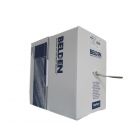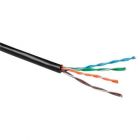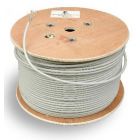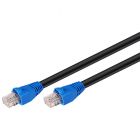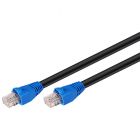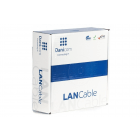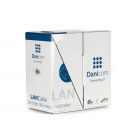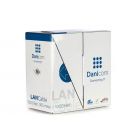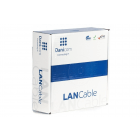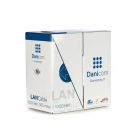When you are looking for a network cable on a roll, you will have to decide whether you want a cable with a smooth or rigid core. However, confusion often arises, and we frequently receive questions about this choice. The confusion is usually due to the terminology of "rigid cable" and "smooth cable." The terms rigid (Solid) or smooth (Stranded) are related to the core of the cable and do not indicate flexibility, as is often thought. Therefore, in this blog, we explain the differences and when you should choose a UTP cable with a smooth or rigid core.
Difference between a Flexible and Rigid Cable:

As briefly explained in the introduction, smooth or rigid relates to the core of the cable. UTP cables consist of four separate pairs of conductors, visible when the cable jacket is stripped. Each of these four pairs also has a "cable jacket" in different colors. The copper wiring transmitting the data signals is ultimately embedded in these four pairs. This is where the difference between a smooth and rigid core lies.
In a UTP cable with a smooth core, one of these pairs consists of very thin copper wires. In a UTP cable with a rigid core, one of these pairs consists of a single copper wire. If you strip the jacket of one such pair in both a rigid and a smooth cable, the difference is apparent. See the photo provided; the orange pair is from a cable with a smooth core, and the white pair is from a cable with a rigid core.
When Do I Need a Smooth Cable?

A cable on a roll with a smooth core is necessary when connectors will be mounted on both sides. This is because the connector's conductor, resembling small blades, goes completely through the conductor for an optimal connection, thanks to the very thin copper wires. With a rigid cable, it may happen that the blades of the connector do not go all the way through the copper wire or slip past it.
If it's necessary to mount a connector on a cable with a rigid core, be sure to choose connectors suitable for this purpose. A good crimping tool will establish a connection in 9 out of 10 cases, but it is never optimal.
When Do I Need a Rigid Cable?
If the cable on a roll needs to be mounted on an LSA strip, you always need a UTP cable with a rigid core. The rigid core adheres better for an optimal connection. LSA strips are found on, among other things, patch panels and wall outlets.
If the cable needs to be mounted on an LSA strip on one end and a connector needs to be attached to the other end, a rigid cable is also necessary.
Is There No Difference in Flexibility?
The difference in flexibility between a rigid and smooth UTP cable is negligible. Both cables are equally suitable for pulling through a conduit or making bends to prevent cable breaks up to a certain degree.
Everything you need to know about UTP cables can be found in our blog 'Which Cable Should I Choose?'. Here, you can read everything you need to know when looking for UTP cabling.
In Summary:
- If connectors will be mounted on both sides, choose a smooth cable.
- If the cable will be connected to an LSA strip, such as on a patch panel or wall outlet, choose a rigid cable.


